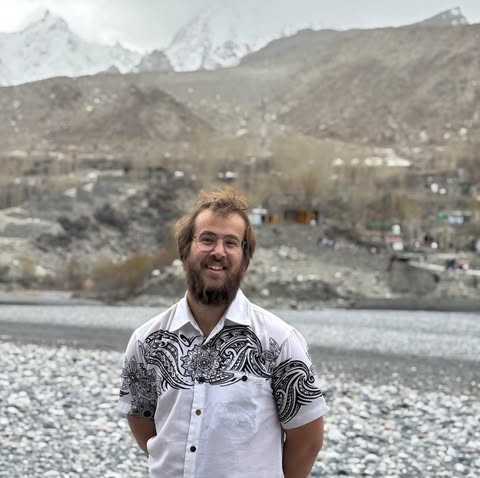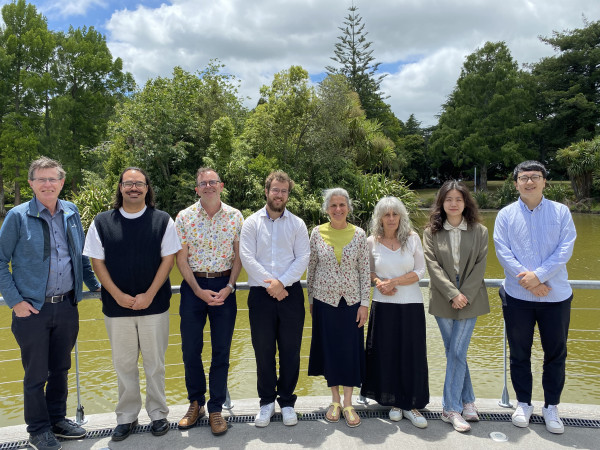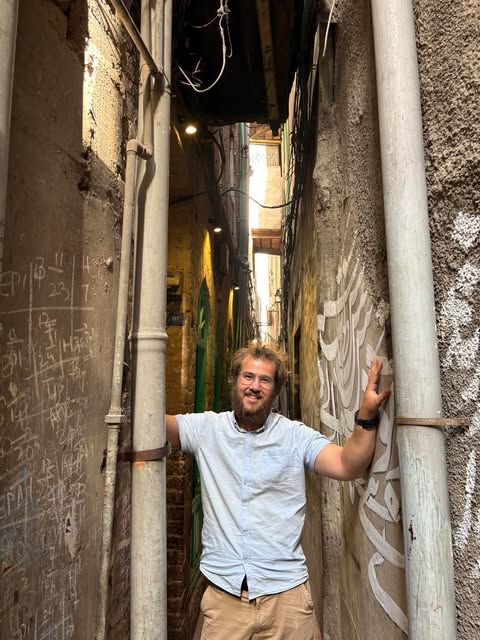Researcher profile: Joel Bishop
When it comes to shaping our towns and cities, few play a bigger role than property developers. Understanding how they decide where and what to build – and the extent to which they factor natural hazard risk in their decision making – is an important step towards building more resilient urban centres.

But, to date, there’s been scant research into who is developing property in New Zealand and what their drivers are.
Newly minted master’s student Joel Bishop is looking to address this critical gap in knowledge.
His master’s thesis at the University of Waikato involved talking to developers around the country to help answer these questions.
Joel is working on a paper based on his research, but his preliminary findings show interesting trends in New Zealand’s housing development landscape, including:
- We’ve reached a tipping point, with demand for multi-residential housing outstripping standalone, suburban homes for nuclear families
- Areas known to be at-risk of natural hazards represent a significant portion of new developments
- Some developers place more importance on whether properties will be insurable than on hazard maps or past events
Joel’s project is one piece of a bigger research puzzle. He is part of Prof Iain White’s team at the University of Waikato, who is being funded by NHC to build a model(external link) that will simulate how ‘agents’ - such as developers, planners and landowners - interact with each other and different policy settings. The model will help planners better predict how changes to plans and policies will impact future urban growth.
Joel is continuing his deep dive into what drives New Zealand’s property developers through an NHC-funded PhD. We talked to Joel about his research as part of our monthly NHC Researcher Profile.
What do you like most about your work?
I’ve been a life-long ‘researcher’ in some sense – reading about whatever new topic interested me and then regurgitating it to whatever audience I could find – so being able to do it as a career is something of a dream come true...
I really enjoy discussing my own and others’ current research with the teams at the University of Waikato and the Natural Hazards Commission. I also like the diversity of subjects and fields of knowledge that I’ve been able to cover in my research, and the opportunities I’ve had to connect my findings to the real world. The awareness that I am contributing in some small way to the creation of useful new knowledge is very exciting to me.

Joel’s team at the University of Waikato.
Why is it important to invest in natural hazards research like yours?
Because natural hazards and natural disasters cost New Zealand hundreds of millions of dollars and dozens of human lives every year, but they don’t have to! While some impact of natural hazards is inevitable in a country so exposed to them as ours, by researching these hazards we can better understand how they work, predict when extreme events like floods and earthquakes will happen, plan for how we are going to protect lives and property, and learn how we can improve our responses afterwards.
There are still a lot of unanswered questions around natural hazards, and the return on investment in research is better economic, social, and environmental outcomes for the whole country.
What is your personal experience with natural hazards, and how has it influenced your research?
I am grateful to have never personally experienced a serious natural disaster. However, natural hazards are a constant presence here in New Zealand – I grew up in Taranaki, where the risk of a catastrophic volcanic eruption is a constant presence, and later moved to the South Island, where I witnessed the extremes of weather on the West Coast and the devastation of post-earthquake Christchurch. I’ve also recently had the privilege of travelling to places like the Philippines, India, and Pakistan, where I’ve experienced how climate change and urban growth are exacerbating the hazard exposure of vulnerable populations.
These experiences have influenced by research by making me understand that while natural processes and forces are inevitable; natural disasters are man-made. We cannot control complex weather patterns or seismic activity, but we can control how we plan land use, construct buildings, and communicate information to manage the risk to people.
What are your ambitions for your research or career?
My hope is that in the future I will be able to establish a career doing research that has a tangible and meaningful impact on my country and its communities – by providing data, insights, and conversations that influence better decision-making around natural hazards.
How I achieve this and what it might look like I honestly don’t know yet!

What does a resilient New Zealand look like to you?
This is a big question! I don’t think that anyone has a complete answer to “how do we make this country resilient?”, and I think that is why we need to make decisions in a democratic and inclusive way.
I do however believe that a resilient New Zealand provides affordable, quality, and safe housing that meets the needs of households and communities without exposing them to high natural hazard risk. A lot of the contemporary discourse around resiliency is centered on recovering from disasters, but if we can carefully plan and design our cities around hazards then we can actually prevent such disasters in the first place.
Do you have a favourite anecdote or memory related to your research?
There have been a lot of late nights spent at my university library with a thousand tabs open after a little ‘eureka’ moment. Or going deep into some academic drama - reading two other researchers with differing ideas battle it out through their publications. I’ve also had some great times meeting with fellow research students and lecturers at the University of Waikato. But my favourite memories are probably the opportunities I’ve had to share my research with others – to hear their perspectives and how they can apply what I’m doing to other fields of research and practice.
Read Joel's full thesis – Establishing a conceptual model for residential development in New Zealand(external link)